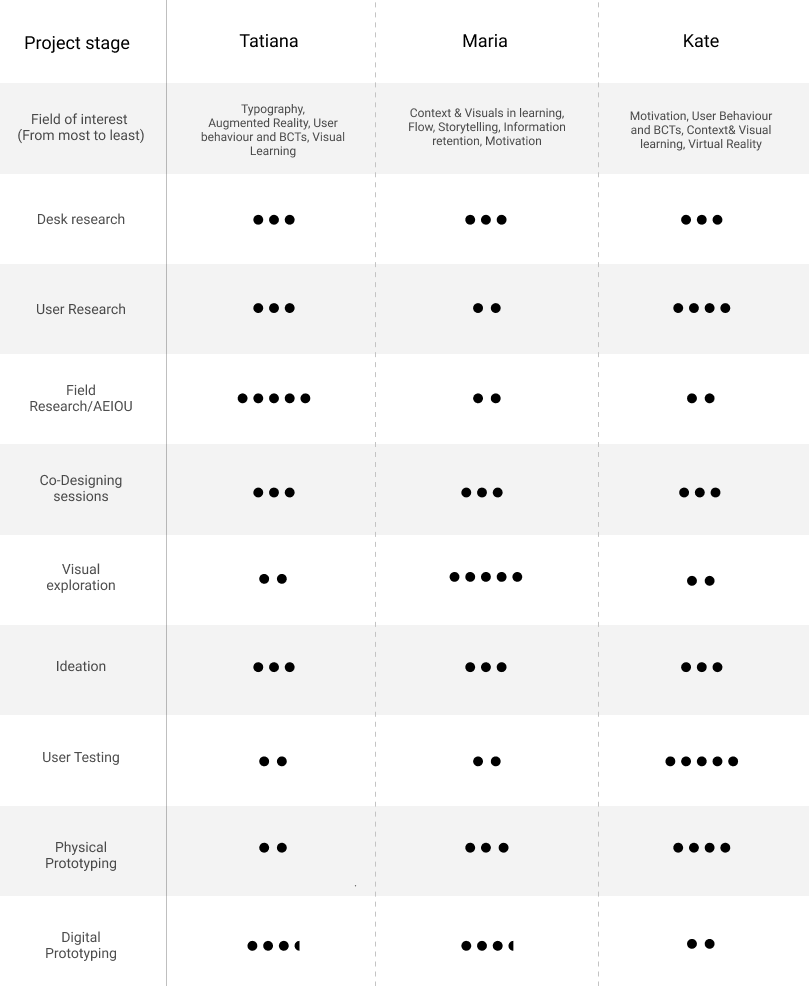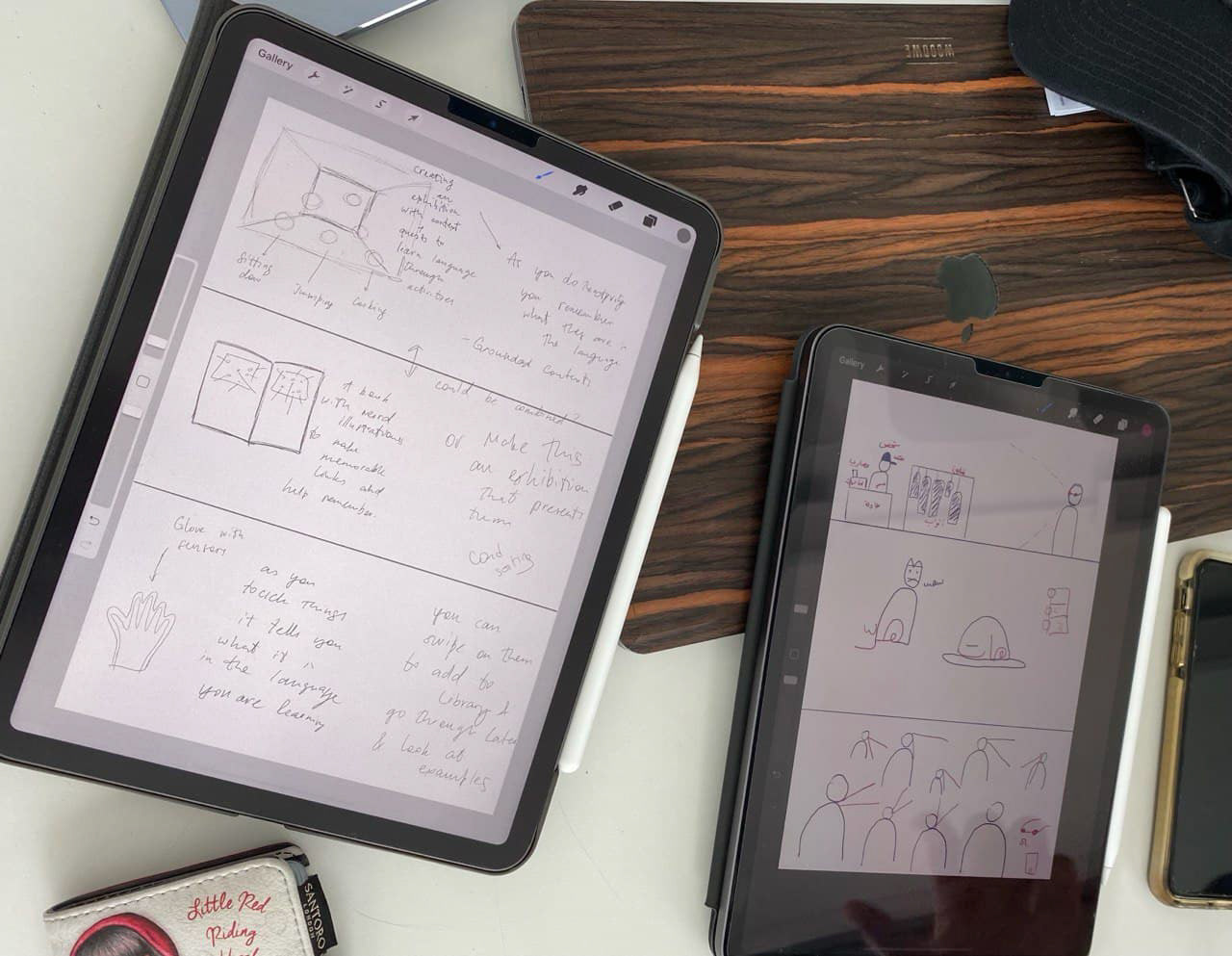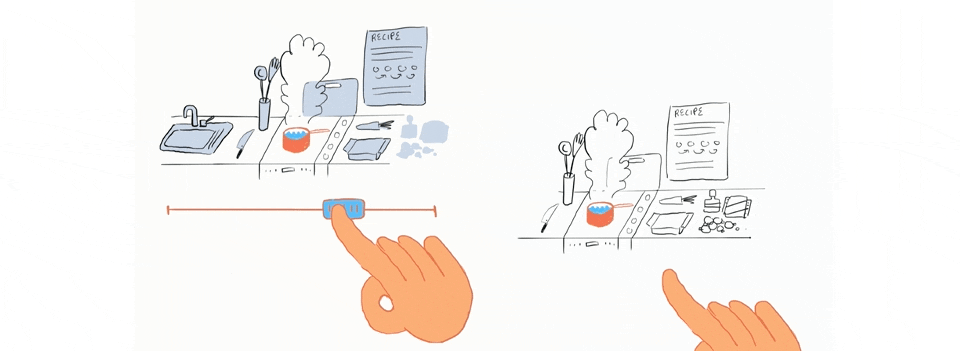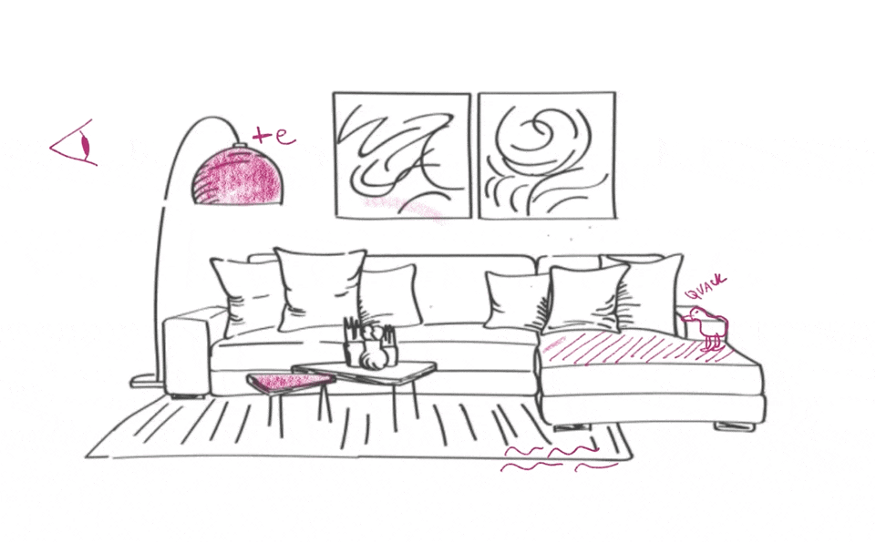June 2021
Group: Tatiana Bohsali, Maria Shuttleworth
Group: Tatiana Bohsali, Maria Shuttleworth
Organising ourselves and shaping our project
Before we dive into the project we needed to complete our proposal and organise ourselves as a team. Although we were all generally interested in the topic, we needed to establish what each one of us would want to get out of this project. Hence, we all sat down to discuss our areas of interest and directions we would wanna explore within this project. In addition, we also wanted to divide our responsibilities based on our skills, wants and needs to improve. As a result, we developed a table that clearly outlined each of our contributions to the project. This helped us understand what each of us wants and get on the same page about the workload and the project in general.

Our table of interests and responsibilities. Developed collaboratively.
Next up, the timeline of how this project would progress. Although it was a requirement to submit this as part of our proposals, I believe that this was still a crucial component of our planning as it helped us stay on track and see what we should be doing and when. It is often that I personally find it difficult to move on from one stage (e.g. discovery) to another (e.g. making and creating) and this timeline was great to refer to.

Our timeline for the project.
Another important part of our proposal was to show that our idea is an opportunity that we found through the analysis of the existing language learning channels. This was also useful to explain what exactly we wanted to do. Hence, we did some initial market research and assessed the pros and cons of the established platforms such as Duolingo, Chineasy and Google Translate. Further into the project we looked at it into more depth to inform ourselves more.

Initial market research to help us understand what already exists and what it does. Developed collaboratively.
CRAZY EIGHTS
To get us started with our visions on how we see our projects' outcomes, we had a workshop where all of us did crazy eights. Which we later used to create and present our initial ideas.

Crazy Eights sketches by Maria.

Crazy Eights sketches by Me and Tatiana.
Initial Ideas
Although we were at a very early stage of the project we still wanted to try and each visualise the direction we saw the project going in. Contrasting to Tat and Maria, I came up with an experience that was purely physical. This made us realise the extent of the things that we could do. This was very helpful for us to understand each other and set ourselves some goals.

Kate: An idea to create a learning exhibition experience where users learn a new language through physically interacting with objects and by doing activities which helps them associate it to a word (verb or noun) and remember better.

Maria: interface with a sliding scale which increasing visual context by also increasing the amount of objects on screen. Each item is clickable/ interactive, and gives examples of how the words is pronounced + used in its context.

Tat: AR design with different modes. Each mode highlights a different theme of objects, once selected you will be able to focus on items groups into separate contexts.
PRESENTATION
Before the summer break, we presented our ideas to the class. We explained to them our concept of developing a design outcome that would target ex-pats and people who travel abroad and struggle to learn the language. We wanted to do that by adding visual context to words/phrases that people can link together, associate and memorise better. We were also interested in how we can make it engaging and interesting enough to make sure the level of motivation remains the same throughout.

Presentation day. Photo taken by Sue An.
Feedback
Overall, we received a lot of useful comments and thoughts from our classmates. Most of them were great and gave us ground for some thinking over the summer. How is what we make going to be different from everything else that exists? What are our aims? How would we evaluate the success of what we make considering language learning is a difficult and long process? What kind of physical artefacts we would want to engage in? And lots more… We were glad we had this summer to figure it all out and felt inspired to get started!